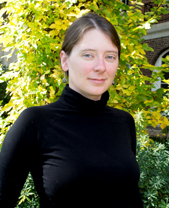-
Membership
Membership
Anyone with an interest in the history of the built environment is welcome to join the Society of Architectural Historians -
Conferences
Conferences
SAH Annual International Conferences bring members together for scholarly exchange and networking -
Publications
Publications
Through print and digital publications, SAH documents the history of the built environment and disseminates scholarshipLatest Issue:

-
Programs
Programs
SAH promotes meaningful engagement with the history of the built environment through its programsMember Programs
-
Jobs & Opportunities
Jobs & Opportunities
SAH provides resources, fellowships, and grants to help further your career and professional life -
Support
Support
We invite you to support the educational mission of SAH by making a gift, becoming a member, or volunteering -
About
About
SAH promotes the study, interpretation, and conservation of the built environment worldwide for the benefit of all
Delhi: Day 8
Today our group was light in number as several of us had fallen sick to some bug that moved its way through our group with a vengeance! Our morning began at the bottom of Raisina Hill between India Gate to our east and the Secretariats immediately to our west. Again, the fog prevented us from seeing the disappearing and reappearing Viceroy’s Palace (Rashtrapati Bhavan) behind the rise of Raisina Hill along the axis of Rajpath (formerly Kingsway) — a wonderful contentious story of competitiveness between Edwin Lutyens (master planner of New Delhi and architect of the Viceroy’s Palace and India Gate) and Herbert Baker (architect of the Secretariats). It is worth a read in Robert Irving’s Indian Summer: Lutyens, Baker, and Imperial Delhi (New Haven: Yale University Press, 1981). We walked up the hill to see the Secretariats closer, and though we were not allowed to tour them, we could walk into the entrance to stand under the main dome of the North Block.
After a lovely outdoor lunch at the Lodhi Gardens, we drove to the diplomatic area to visit the United States Embassy and Ambassador’s House (1959-62) designed by Edward Durell Stone. We could not photograph the buildings, leaving our cameras on the bus. The buildings were beautifully maintained. We toured the Ambassador’s house finding that the interior had been modified to enclose the dining room and side rooms, previously open across the double-height interior hall. The Embassy’s interior was a wonderful surprise with a large courtyard pool surrounded by offices on all sides. It had a playful feel with the stepping stones across the pool and the wooden doors to the offices. In fact, it gave me more of a sense of a resort than an office building.
We departed the Embassy for the train station. Our group of forty must have been quite a difficult task for our Delhi administrator, Piyush, to move us through the massive crowds of people meeting arriving passengers and departing for all parts of India. The train station was immense, or so it felt. And, we thought we wouldn’t have to wait long for our train, but again, the fog descended onto Delhi. Our train and every other train moving through the capital was delayed by hours. We finally reached Chandigarh after midnight.
 Gretta Tritch Roman, Ph.D. Candidate, Penn State University
Gretta Tritch Roman, Ph.D. Candidate, Penn State University Gretta Tritch Roman is a Ph.D. candidate in art and architectural history at the Pennsylvania State University. She earned a Bachelor of Architecture at the University of Arkansas and her Master’s degree in art and architectural history at the Pennsylvania State University where she completed a thesis titled, “La mise en scène icarienne: The Construal of Utopian Space in Nauvoo, Illinois, 1849-58.” Recently her research has focused on strategies of eclectic designs and the ways in which varying audiences respond to such buildings, opening discussions that have ranged from Lucknow, India, to Chicago, Illinois. Currently she is working on her dissertation under the working title, “Rivalry, Revivalism, and Ritual: Building the Grain Exchanges of the American Midwest, 1875-1930.”





Leave a commentOrder by
Newest on top Oldest on top